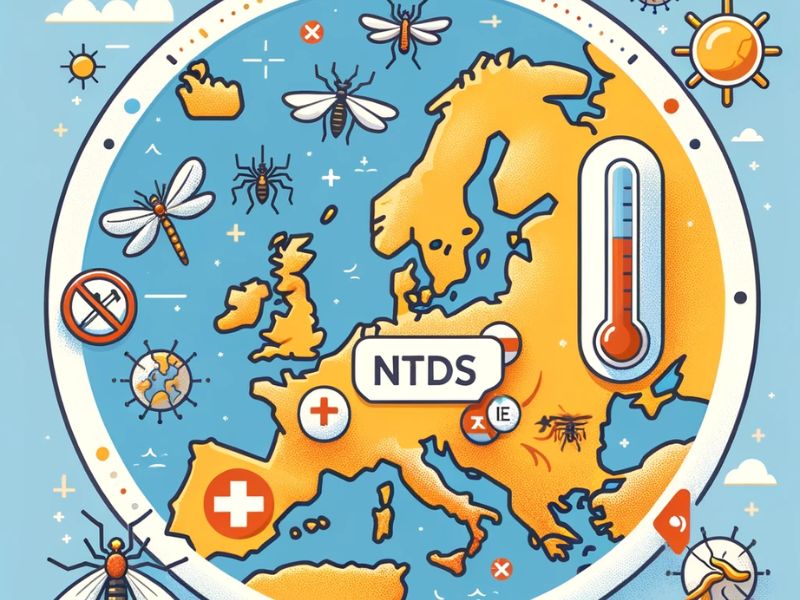
Neglected tropical diseases in Europe: a growing problem
From Climate Change to Immigration: Factors Bringing Neglected Tropical Diseases to Europe
Neglected Tropical Diseases (NTDs)
Neglected Tropical Diseases (NTDs) are becoming increasingly common in Europe, largely due to immigration from endemic areas. These diseases, often overlooked by research and healthcare systems, encompass a variety of bacterial, parasitic, and viral infections. Specific treatment for these diseases is rarely available in many European countries as the drugs are neither officially authorized nor marketed. Only a few reference centers can access drugs for NTDs through complex and costly bureaucratic processes by importing or providing them through the WHO.
Climate Change and the Rise of NTDs
Climate change is contributing to the spread of Neglected Tropical Diseases in Europe. Global warming has created more favorable conditions for the survival and proliferation of disease vectors such as mosquitoes and ticks, leading to the increase of diseases like dirofilariasis, transmitted by mosquitoes and initially found only in animals like dogs. These diseases are advancing northward in Europe, in part due to climate change. Additionally, many of these diseases are misdiagnosed or unrecognized by doctors, leading to delays in treatment.
The Need for Greater Awareness and Preparedness
As the landscape of diseases evolves, it becomes essential for health authorities to understand the risks posed by Neglected Tropical Diseases and have a detailed knowledge of the presence and behavior of disease vectors in Europe. Projects like VectorNet and Mosquito Alert are collecting data on the distribution of disease vectors such as mosquitoes, ticks, and sandflies. Citizen participation through citizen science projects is becoming a valuable component in monitoring invasive species and helping shape disease vector control strategies.
Towards a Global Response to NTDs
Neglected Tropical Diseases are becoming a global issue that requires concerted action not only to better understand the vector-environment relationship but also to develop vaccines, diagnostics, and treatments for these diseases. The World Health Organization (WHO) and the global community are working to reduce the number of people in need of NTD interventions, which has decreased by 25% in the past decade. However, the COVID-19 pandemic has had a significant impact on NTD programs, leading to a 34% reduction in the number of people treated between 2019 and 2020. Now, more than ever, a global commitment is crucial to address NTDs, considering their economic and public health impact.
Sources


